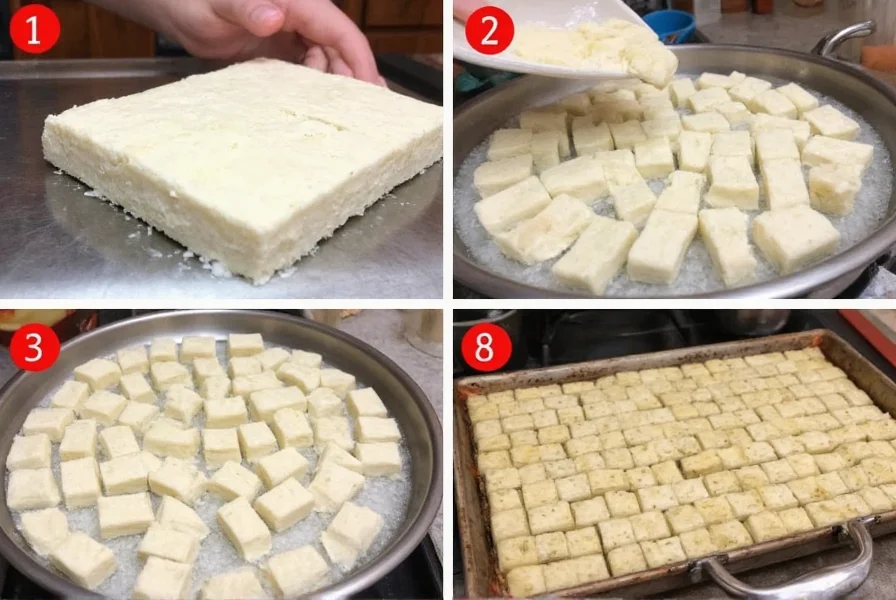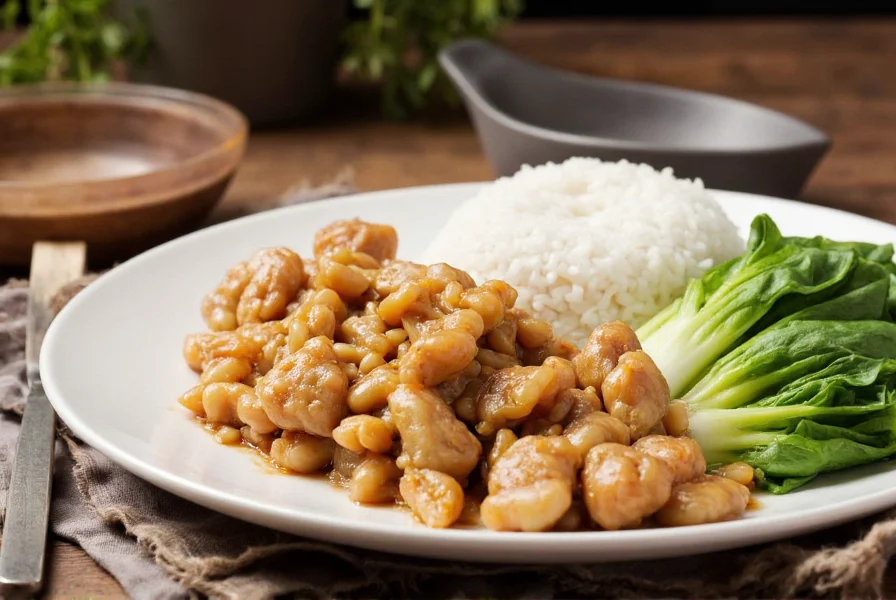Salt and pepper bean curd represents one of the most beloved vegetarian dishes in Cantonese cuisine, celebrated for its satisfying crunch and aromatic seasoning. This humble yet flavorful preparation transforms simple tofu into an extraordinary culinary experience through careful technique and balanced seasoning.
The Origins of Salt and Pepper Bean Curd
Emerging from Guangdong province in southern China, salt and pepper bean curd became popular in Hong Kong's bustling restaurant scene before spreading globally. The dish exemplifies the Cantonese culinary philosophy of enhancing simple ingredients through precise cooking methods rather than masking them with heavy sauces. Traditional Chinese restaurants typically feature this preparation as part of their vegetarian offerings, often served as an appetizer or alongside rice dishes.
Essential Ingredients for Authentic Flavor
The magic of perfect salt and pepper bean curd lies in both ingredient selection and preparation technique. While variations exist across regions, the core components remain consistent:
| Ingredient | Quantity | Special Notes |
|---|---|---|
| Firm or extra-firm tofu | 14-16 oz block | Must be pressed to remove excess moisture |
| Cornstarch | 1/2 cup | Creates the signature crispy exterior |
| Freshly ground black pepper | 1-2 tsp | Freshly ground makes all the difference |
| Garlic | 3-4 cloves | Thinly sliced for aromatic infusion |
| Thai bird chili or red pepper flakes | 1-2 | Adjust to taste preference |
Step-by-Step Preparation Guide
Creating restaurant-quality salt and pepper bean curd at home requires attention to detail at each stage of preparation:
1. Tofu Preparation
Begin by pressing your tofu block between paper towels with a weighted plate for at least 30 minutes. This critical step removes excess water, allowing the tofu to crisp properly during frying. Cut the pressed tofu into 1-inch cubes, handling gently to maintain their shape.
2. Coating Technique
Place cornstarch in a large bowl and add tofu cubes, gently tossing to coat evenly. The cornstarch creates a light, crispy exterior when fried. For extra crunch, some chefs recommend a double-coating technique—dipping tofu in beaten egg white before the cornstarch.

3. Frying Process
Heat vegetable oil to 350°F (175°C) in a wok or deep skillet. Fry tofu in small batches until golden brown and crispy, about 3-4 minutes per batch. Overcrowding the pan lowers oil temperature and creates soggy results. Drain fried tofu on wire racks to maintain crispness.
4. Final Seasoning
In a clean wok over medium-high heat, add one tablespoon oil, minced garlic, and sliced chilies. Stir-fry until fragrant (about 30 seconds), then add the fried tofu and your salt and freshly ground pepper mixture. Toss gently to coat evenly without breaking the tofu cubes. The entire process should take no more than 2 minutes to preserve the crisp texture.
Professional Tips for Perfect Salt and Pepper Bean Curd
Mastering this dish requires understanding several key techniques that separate authentic preparations from ordinary imitations:
- Oil temperature control - Maintain consistent 350°F oil temperature throughout frying
- Freshly ground pepper - Pre-ground pepper lacks the vibrant flavor of freshly cracked peppercorns
- Minimal salt - The dish relies on pepper as the dominant flavor, with salt playing a supporting role
- Immediate serving - Best enjoyed within minutes of preparation to maintain optimal texture
- Garlic timing - Add garlic just before the tofu to prevent burning while maximizing aroma
Variations Across Chinese Cuisine
While the Cantonese version remains most popular globally, regional variations of salt and pepper bean curd exist throughout China:
- Sichuan style - Incorporates Sichuan peppercorns for that distinctive numbing sensation
- Hainan variation - Uses coconut oil for frying, adding subtle tropical notes
- Vegetarian restaurant adaptation - Sometimes includes five-spice powder for additional complexity
- Modern fusion versions - May incorporate smoked salt or specialty peppers for unique flavor profiles
Serving Suggestions and Pairings
Salt and pepper bean curd shines as both a standalone appetizer and component of a larger meal. Traditional pairings include:
- Steamed jasmine rice to balance the dish's bold flavors
- Light vegetable stir-fries like Chinese broccoli or snow pea shoots
- Crisp Asian-style salads with ginger dressing
- As part of a multi-dish banquet, typically served after soup courses but before main proteins

Storage and Reheating Guidelines
While best enjoyed immediately, properly stored salt and pepper bean curd maintains reasonable quality for short periods:
- Store in an airtight container in the refrigerator for up to 2 days
- Reheat in an air fryer at 350°F for 3-4 minutes to restore crispness
- Avoid microwaving, which creates a rubbery texture
- Do not freeze, as the texture deteriorates significantly upon thawing
Common Mistakes to Avoid
Even experienced home cooks encounter challenges with this seemingly simple dish. Watch for these pitfalls:
- Using soft or silken tofu instead of firm varieties
- Skipping the tofu pressing step, resulting in soggy texture
- Overcrowding the wok during frying
- Adding salt too early in the seasoning process
- Burning the garlic and chilies during the final toss
- Using pre-ground pepper instead of freshly cracked











 浙公网安备
33010002000092号
浙公网安备
33010002000092号 浙B2-20120091-4
浙B2-20120091-4